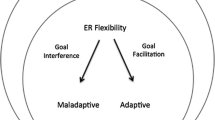Abstract
Emotions can be the subject of moral judgments; they can also constitute the basis for moral judgments. The apparent circularity which arises if we accept both of these claims is the central topic of this paper: how can emotions be both judge and party in the moral court? The answer I offer regards all emotions as potentially relevant to ethics, rather than singling out a privileged set of moral emotions. It relies on taking a moderate position both on the question of the naturalness of emotions and on that of their objectivity as revealers of value: emotions are neither simply natural nor socially constructed, and they apprehend objective values, but those values are multi‐dimensional and relative to human realities. The “axiological” position I defend jettisons the usual foundations for ethical judgments, and grounds these judgments instead on a rationally informed reflective equilibrium of comprehensive emotional attitudes, tempered with a dose of irony.
Similar content being viewed by others
References
Aristotle, Nicomachean Ethics, in J. Barnes (ed.), The Complete Works of Aristotle: The Revised Oxford Translation. Bollingen Series. Princeton: Princeton University Press, 1984a.
Aristotle, Rhetoric, in J. Barnes (ed.), The Complete Works of Aristotle: The Revised Oxford Translation. Bollingen Series. Princeton: Princeton University Press, 1984b.
Bedford, E., Emotions, Proceedings of the Aristotelian Society 57 (1957), pp. 281–304.
Boudon, R., and Betton, E., Explaining the Feelings of Justice, Ethical Theory and Moral Practice 2 (1999) pp. 365–398.
Campbell, S., Interpreting the Personal: Expression and the Formation of Feeling. Ithaca: Cornell University, 1998.
D'Arms, J., and Jacobson, D., The Moralistic Fallacy, Philosophy and Phenomenological Research, forthcoming.
Darwin, C., in Paul Ekman (ed.), with commentary and notes. The Expression of the Emotions in Man and Animals. London: Harper Collins, 1998.
de Sousa, R., The Rationality of Emotion. MIT Press <a Bradford Book>, 1986.
de Sousa, R., Learning to be Natural, in N. Roughley (ed.), Being Humans. Berlin and New York: de Gruyter, 2000, pp. 287–307.
de Sousa, R., Emotions and Moral Progress: In Black-and-White and Colour. Unpublished.
Gallese, V., and Goldman, A., Mirror Neurons and the Simulation Theory of Mind-Reading, Trends in Cognitive Sciences 2fs (1998), pp. 493–501.
Gordon, Robert, The Passivity of Emotions, Philosophical Review 95 (1986) pp. 371–392.
Harré, Rom, (ed.), The Social Construction of Emotions. Oxford: Basil Blackwell, 1986.
Hume, D., in, L.A. Selby-Bigge (ed.), A treatise of human nature, 2nd Ed. Revised by and notes by P. H. Niditch. Oxford: University Press, Clarendon, 1978.
Hutcheson, F., An Essay on the Nature and Conduct of the Passions and Affections, With Illustrations in the Moral Sense. London: Printed for A. Ward [etc.], 1742.
Huxley, T.H., and Huxley, J., Evolution and Ethics: 1893—1943. London, The Pilot Press, 1947.
Itard, J., Mémoire et rapport sur Victor de l'Aveyron, in L. Malson (ed.), Les Enfants Sauvages: Mythe et Realité. Paris: Union Générale d'Éditions, 1964.
Ledoux, J., The Emotional Brain: The Mysterious Underpinnings of Emotional Life. New York: Simon & Schuster, 1996.
Mill, J.S., Utilitarianism, in J.M. Robson (ed.), Collected Works of John Stuart Mill, vol. 10. London: Routledge and Toronto: University of Toronto Press, 1991, pp. 203–259.
Miller, W., Bloodtaking and Peacemaking: Feud, Law, and Society in Saga Iceland. Chicago: University of Chicago Press, 1990.
Murdock, G., EthnoGraphic Atlas. Pittsburgh: University of Pittsburgh Press, 1967.
Nussbaum, M., Compassion: The Basic Social Emotion, Social Philosophy and Policy 13 (1996), pp. 27–58.
Panksepp, J., Affective Neuroscience: The Foundations of Human and Animal Emotions. New York; Oxford: Oxford University Press, 1998.
Popper, K.R., The Open Society and its Enemies. New York: Harper and Row, Harper Torchbooks/The Academy Library, 1963.
Sartre, J.-P., Being and Nothingness: An Essay on Phenomenological Ontology. Trans. and introduction by H.E. Barnes. New York: Philosophical Library, 1956.
Scheler, M., Zur Phänomenologie und Theorie der Sympathie-Gefühle und von Liebe und Hass. Halle, 1913.
Sober, E., and Wilson, D., Unto Others: the Evolution and Psychology of Unselfish Behavior. Cambridge, MA.: Harvard University Press, 1998.
Solomon, R.C., Emotion and Choice, Review of Metaphysics 17 (1973), pp. 20–41.
Spinoza, Baruch, Ethics, in Edwin Curley (ed.), and trans. Collected Works of Spinoza. Princeton: Princeton University Press, 1985.
Smith, Adam, in D.D. Raphael (ed.), The Theory of Moral Sentiments. Indianapolis: Liberty Classics, 1982.
Williams, B., Morality and the Emotions, in Problems of the Self: Philosophical Papers 1956—1972. Cambridge: Cambridge University Press, 1973.
Woodcock, S., and Heath, J., The Robustness of Altruism as an Evolutionary Strategy, unpublished.
Author information
Authors and Affiliations
Rights and permissions
About this article
Cite this article
de Sousa, R. Moral Emotions. Ethical Theory and Moral Practice 4, 109–126 (2001). https://doi.org/10.1023/A:1011434921610
Issue Date:
DOI: https://doi.org/10.1023/A:1011434921610




